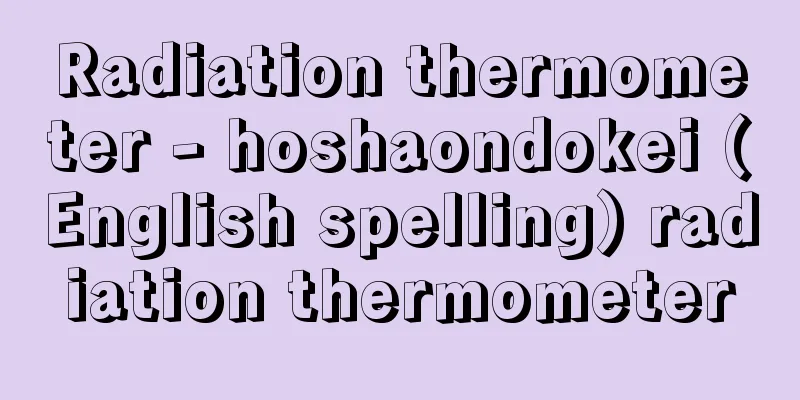White male

|
A haiku poet from the mid-Edo period. His surname was Kaya. His real name was Yoshiharu. He was commonly known as Gorokichi. He was originally called Sharai, and later Saku. His other name was Shiroobo. He was born in Fukagawa, Edo. Some say he was born in 1735 (Kyoho 20). He was the second son of a samurai from Ueda Domain in Shinshu (Nagano Prefecture). His mother died when he was five, and it is said that he ran away from home at 13 and trained at a Zen temple in Tatebayashi, Kozuke, but this is not known for certain. He first studied haiku under Seiga, then became a disciple of Umei, and further studied under Umei's teacher Chosui. He traveled all over the country, but he particularly frequented Shinshu, where he trained many disciples. In 1780 (An'ei 9), he opened Shunjuan in Edo Nihonbashi, and published a series of haiku poems titled Shunjuko, establishing himself as an influential figure in the haiku world. Following the teachings of his teacher Chosui, he advocated leaving the mundane world behind and placing importance on natural taste. He died on September 13, 1790 (Kansei 3). His best known haiku theory is Kazarinashi, written in 1771 (Meiwa 8) at his temporary residence in Kyoto, and also Sabishiori (Sabishiori) (1812). His style was delicate and elegant. His edited works include Menkageshu (1769) and Fuguruma (1772). I miss people, and the light of the lamp falls. [Yamashita Kazumi] Source: Shogakukan Encyclopedia Nipponica About Encyclopedia Nipponica Information | Legend |
|
江戸中期の俳人。姓は加舎(かや)。本名吉春。通称五郎吉。初号舎来(しゃらい)、ついで昨烏(さくう)と名のった。別号白尾坊。江戸深川の生まれ。1735年(享保20)を生年とする説もある。信州(長野県)上田藩士の次男。5歳で生母に死別し、13歳のとき家出し、上州館林(たてばやし)で禅寺に修行したともいうが、確かなことはわからない。俳諧(はいかい)は初め青峨(せいが)に学び、ついで烏明(うめい)に入門、さらに烏明の師鳥酔(ちょうすい)にも学んだ。諸国を旅したが、とくに信州へはしばしば足を運んで、多くの門弟を育てた。1780年(安永9)江戸日本橋に春秋庵(あん)を開き、俳諧集『春秋稿』を続刊、俳壇に一勢力を築いた。師鳥酔の説を継ぎ、俗な世界を離れて自然な趣(おもむき)を重んじることを主張した。寛政(かんせい)3年9月13日没。俳論は1771年(明和8)京都の仮寓(かぐう)で書いた『加佐里那止(かざりなし)』がよく知られ、ほかに『寂栞(さびしおり)』(1812)がある。作風は繊細で高雅。編著に『面影集』(1769)、『文車(ふぐるま)』(1772)などがある。 人恋し灯(ひ)ともしごろをさくらちる 出典 小学館 日本大百科全書(ニッポニカ)日本大百科全書(ニッポニカ)について 情報 | 凡例 |
>>: Shiraebi (white shrimp) - Pasiphaea japonica
Recommend
Kodomari [Village] - Kodomari
A village in Kitatsugaru District, northwest of Ao...
amakihi
... Hawaiian honeycreepers prefer tropical rainfo...
Cavalier Poet
…One is the poetry of the Metaphysical Poet, who ...
Masip, VJ (English spelling) MasipVJ
…Vicente Juan Masip was a Mannerist painter who r...
Detention for evaluation - Kanteiryuuchi
When necessary to perform an evaluation of the me...
Matsudaira Tadateru - Matsudaira Tadateru
Year of death: Tenwa 3.7.3 (1683.8.24) Year of bir...
Badmouthing - Akko
Slander has played various social functions, such...
Mogannia minuta (English spelling)
…[Masami Hayashi]. . … *Some of the terminology t...
PVDF
…The main physical properties of tetrafluororesin...
Kurpiński, KK (English spelling) KurpinskiKK
… [Romanticism period] In the 19th century, Polis...
Yuhachi Ikeda
1886-1963 A sculptor from the Meiji to Showa peri...
Phalacrocorax capillatus
…Cormorant Fishing [Kiyomitsu Sasaki]. … *Some of...
Added since Kenmu - Kenmuirai Ikka
A collection of laws issued by the Muromachi Shog...
Association Internationale de Boxe Amateur (English)
...Even since 1995, around 100 events are held ea...
Responsibility for starting the war
…World War I showed the appearance of a total war...





![Kanuma [city] - Kanuma](/upload/images/67cb3b1d03359.webp)



